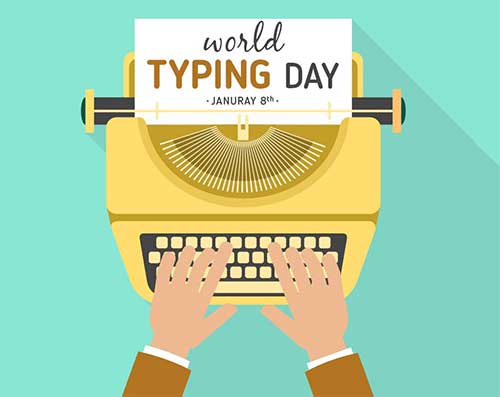
Introduction
World Stroke Day is a global call to action, raising awareness about stroke causes, prevention, and early detection. Observed on October 29 each year, it aims to highlight the profound impact of stroke, a leading cause of death and long-term disability worldwide. This day, organized by the World Stroke Organization (WSO), encourages individuals and communities to prioritize prevention, recognize the symptoms, and respond promptly when stroke strikes.

In this article, we'll explore the importance of #WorldStrokeDay, discuss the leading causes and symptoms of stroke, and offer practical prevention tips for a healthier life.
What is World Stroke Day?
World Stroke Day was launched by the WSO to promote awareness about the staggering impact of stroke and to emphasize how it can be prevented. Strokes are often life-altering, affecting individuals and families both emotionally and financially. Each year, the World Stroke Day theme focuses on crucial aspects such as identifying symptoms, accessing treatment, and encouraging lifestyle changes to prevent stroke in high-risk groups.
Global Impact of Stroke
Stroke Statistics Around the World
According to the World Health Organization, 15 million people worldwide suffer from a stroke each year. Approximately 5 million of these individuals lose their lives, while another 5 million are left with lasting disabilities. Stroke is not only a significant health issue but also a leading cause of disability, placing a heavy economic burden on families and healthcare systems.
Social and Economic Implications of Stroke
Beyond physical health, stroke impacts mental health, family dynamics, and finances. Rehabilitation is often long-term, requiring specialized therapy and ongoing support, which can strain financial resources and affect caregivers. These realities underscore the importance of World Stroke Day and the urgent need for widespread stroke education and awareness.
Understanding Stroke and Its Types
What Causes a Stroke?
A stroke occurs when blood flow to the brain is interrupted, leading to cell death in affected areas. There are two primary types of strokes:
1. Ischemic Stroke: This is the most common form caused by a blood clot or blockage in an artery leading to the brain. Poor lifestyle choices, high cholesterol, and arterial disease often contribute to this type.
2. Hemorrhagic Stroke: This type occurs when a blood vessel ruptures within the brain, causing bleeding and increased pressure. Conditions such as high blood pressure and aneurysms are common causes of hemorrhagic stroke.
Mini-Strokes or Transient Ischemic Attacks (TIAs)
TIAs, or mini-strokes, are temporary interruptions of blood flow to the brain. Although symptoms may disappear quickly, TIAs are a warning sign of a potential future stroke and should not be ignored.
Recognizing Stroke Symptoms – The FAST Method
Understanding the FAST Method
One of the main messages of World Stroke Day is the importance of quickly recognizing stroke symptoms, which can save lives. The FAST method is an easy way to remember stroke symptoms:
• Face: Check if one side of the face droops.
• Arms: Check if one arm is weak or numb.
• Speech: Listen for slurred or strange speech.
• Time: Act fast and call emergency services immediately.
Additional Symptoms to Watch For
Besides the FAST indicators, other #StrokeSymptoms include sudden confusion, severe headaches with no known cause, dizziness, and loss of coordination. Prompt medical attention is crucial, as early intervention can significantly reduce the risk of lasting brain damage.
Primary Risk Factors for Stroke
High Blood Pressure and Heart Disease
High blood pressure, or hypertension, is the most significant risk factor for stroke. It can damage blood vessels over time, increasing the risk of both ischemic and hemorrhagic strokes. Heart disease, including atrial fibrillation, also raises stroke risk due to blood clot formation.
Diabetes and High Cholesterol
Diabetes increases stroke risk due to its effect on blood vessels and circulation. At the same time, high cholesterol can lead to plaque buildup, narrowing arteries, and reducing blood flow to the brain. Monitoring and managing these conditions are essential steps in stroke prevention.
Prevention and Lifestyle Changes
Healthy Eating and Regular Exercise
A nutritious diet rich in fruits, vegetables, lean proteins, and whole grains supports heart health and reduces stroke risk. Regular exercise, like walking, cycling, or swimming, strengthens the cardiovascular system and helps maintain a healthy weight. The American Heart Association recommends at least 150 minutes of moderate exercise weekly.
Avoiding Smoking and Limiting Alcohol
Smoking damages blood vessels and increases the likelihood of clot formation, significantly raising stroke risk. Alcohol, when consumed in excess, raises blood pressure, adding to the risk of both types of stroke. By quitting smoking and moderating alcohol intake, individuals can protect their cardiovascular health.
World Stroke Day 2023 Theme – Prevention and Early Intervention
World Stroke Day is marked by a theme focusing on critical stroke awareness and prevention strategies each year. The 2023 theme, "Prevention and Early Intervention," emphasizes the need for proactive health practices and early recognition of stroke symptoms.
This theme calls on individuals, families, and healthcare providers to collaborate on preventative measures, aiming to reduce the number of stroke cases globally and improve outcomes for those affected.
The Role of Technology in Stroke Prevention
Wearable Health Devices
Wearable devices like fitness trackers and smartwatches have become valuable tools in #StrokePrevention. Many devices now monitor heart rate, blood pressure, and physical activity, providing users with real-time health data that can alert them to potential risks.
Telemedicine in Stroke Care
Telemedicine enables individuals, especially those in remote areas, to quickly access specialist consultations and diagnostic evaluations. In stroke cases, telemedicine can help bridge the gap between patients and critical healthcare resources, supporting faster intervention and better outcomes.
Supporting Stroke Survivors Through Rehabilitation
Physical and Occupational Therapy
Stroke rehabilitation, including physical and occupational therapy, is essential for helping survivors regain independence. Physical therapy focuses on mobility and strength, while occupational therapy assists in relearning daily activities like dressing and cooking.
Emotional Support and Community Resources
Stroke recovery can be a difficult journey, emotionally and physically. Support groups, mental health counseling, and social resources provide emotional support for survivors and their families, helping them navigate life after stroke.
The Importance of Public Awareness Campaigns
World Stroke Organization's Initiatives
The World Stroke Organization runs global campaigns, including educational programs, social media outreach, and partnerships with healthcare providers. These campaigns aim to make stroke information accessible to everyone and encourage communities to take proactive steps toward stroke prevention.
The Role of Local Communities and Non-Profits
Local organizations play an essential role in spreading stroke awareness. Many communities offer support groups, rehabilitation programs, and educational resources, empowering individuals with the tools and knowledge to reduce stroke risk.
Related Global Health Awareness Days
Other global awareness days support health and well-being across diverse communities. One example is the World Day for Audiovisual Heritage, Celebrating History Through Sound and Vision, which underscores the importance of preserving our cultural heritage and the need for awareness across all aspects of human life, including health, history, and community.
Conclusion
World Stroke Day reminds us of the importance of stroke awareness, prevention, and fast response. By understanding the symptoms, managing risk factors, and making lifestyle adjustments, we can significantly reduce the risk of stroke. Additionally, community and global efforts ensure that information about stroke is accessible, empowering individuals to protect their health and support others affected by stroke.
Frequently Asked Questions
1. What is World Stroke Day's main goal? The primary goal of World Stroke Day is to raise awareness about stroke symptoms, risk factors, and prevention to reduce the global incidence and impact of stroke.
2. What are the common risk factors for stroke? Key risk factors include high blood pressure, smoking, diabetes, high cholesterol, and a sedentary lifestyle. Managing these factors through lifestyle changes can reduce stroke risk.
3. How can technology help prevent stroke? Wearable health devices and telemedicine services support early detection of risk factors and provide remote access to stroke specialists, enabling quicker and more effective interventions.
4. How does the FAST method help in identifying stroke? The FAST method (Face, Arms, Speech, Time) helps quickly identify stroke symptoms, enabling immediate response and reducing the risk of long-term disability.
5. What is the theme for World Stroke Day 2023? The theme for 2023 is "Prevention and Early Intervention," emphasizing the need for proactive steps to reduce stroke risk and recognize symptoms early.
6. What support is available for stroke survivors? Stroke survivors can benefit from physical and occupational therapy, emotional support from family and community resources, and professional counseling to aid recovery and adaptation.
7. How does World Stroke Day contribute to global health? World Stroke Day promotes awareness, encourages preventive measures, and highlights the importance of fast response, which can help save lives and improve health outcomes globally.
For more information on global health and awareness, consider exploring organizations like the World Stroke Organization and the World Health Organization. Both provide valuable resources and information on stroke prevention and support.



